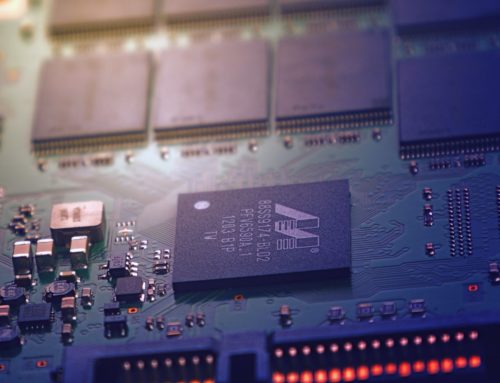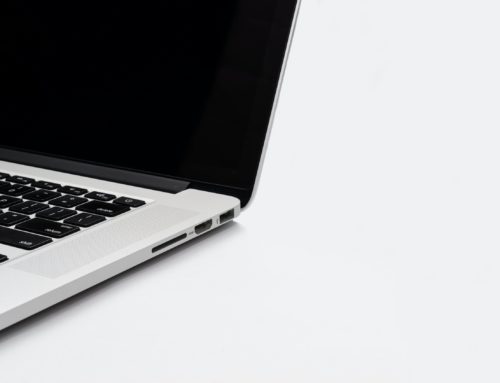Peering into the future, the year 2023 presents an ever-evolving landscape where security concerns continue to hold steadfast importance. With technological advancements accelerating at breakneck speeds, the need for vigilant protection is more critical than ever. In this digital age, security cameras have become an indispensable tool, providing an unblinking eye on our surroundings. Yet, in an increasingly saturated market, finding the perfect security camera can feel like navigating a maze of options and risks. Fear not, for this article will serve as your guiding light, illuminating the essential factors to consider when embarking on the quest to purchase the ideal security camera. Whether you’re safeguarding your home, business, or valuables, our tips and insights will help you make an informed decision, unravel the enigma of technical jargon, and navigate through the potential pitfalls that lurk within the realm of surveillance devices. So, channel your inner Sherlock Holmes, hold tightly to your magnifying glass, and let’s embark together into the realm of security camera buying, where truth and protection await.
Table of Contents
- 1. The Quest for Impeccable Surveillance: A Sneak-Peek into the Ultimate Security Camera Buying Guide
- 2. Delve into the Future: Unlocking the Must-Have Features of Security Cameras in 2023
- 3. Beyond the Lens: Navigating the Hidden Dangers and Potential Pitfalls of Security Camera Purchases
- 4. The Art of Choosing: A Step-by-Step Journey to Finding the Perfect Security Camera for Your Needs
- 5. The Devil’s in the Details: Unleashing the Lesser-known Factors That Determine the Quality of Security Cameras
- 6. The Tech Tango: Balancing Innovation and Privacy in the Ever-Advancing World of Security Cameras
- 7. Mastering the Game of Surveillance: Strategies to Avoid Common Traps and Scams When Buying a Security Camera
- 8. DIY vs. Professional Installations: Weighing the Pros and Cons before Investing in Your Security System
- Q&A
1. The Quest for Impeccable Surveillance: A Sneak-Peek into the Ultimate Security Camera Buying Guide
Are you tired of worrying about the security of your home or workplace? Look no further. In this comprehensive surveillance camera buying guide, we have compiled everything you need to know to make an informed decision and find the perfect security camera for your needs.
Factors to Consider:
- Image Quality: High-resolution cameras are essential for crystal-clear footage. Look for cameras with at least 1080p resolution to capture every detail.
- Field of View: A wider field of view ensures greater coverage. Consider cameras with wide-angle lenses or pan/tilt capabilities to monitor larger areas.
- Night Vision: Opt for cameras equipped with infrared (IR) technology for reliable night vision. This is crucial for round-the-clock surveillance.
- Recording and Storage: Decide if you want cameras that record continuously or only when motion is detected. Look for cameras that offer local storage options or cloud storage services for easy access to footage.
- Wireless Connectivity: Wireless cameras provide flexibility in installation and enable remote access to live feeds from your smartphone or computer.
- Weather Resistance: If you plan to install outdoor cameras, ensure they are weatherproof to withstand various elements.
- Integration with Other Devices: Consider cameras that can be integrated with other smart home devices to create a comprehensive surveillance system.
- Price: Remember to set a budget and compare prices within your desired range. While cost is important, never compromise on the quality and reliability of the camera.
Don’t settle for mediocre surveillance solutions. With our ultimate buying guide, you are equipped with the knowledge and factors to consider when seeking top-notch security cameras. Stay tuned for the following sections where we delve deeper into camera types, advanced features, and expert tips.
2. Delve into the Future: Unlocking the Must-Have Features of Security Cameras in 2023
In 2023, security cameras are expected to revolutionize the way we protect our homes and businesses. With advancements in technology, these surveillance tools will offer an array of must-have features that will enhance their effectiveness like never before.
First and foremost, the security cameras of 2023 will be equipped with advanced artificial intelligence (AI) capabilities. This means they will be able to accurately differentiate between human movement and other objects, reducing false alarms and ensuring that only relevant events are captured. Additionally, AI-powered cameras will have facial recognition technology, allowing them to identify known individuals and even detect suspicious behavior based on predefined patterns.
- Superior image quality: Expect security cameras to offer high-resolution video footage with stunning clarity and detail, making it easier to identify individuals and objects in any situation.
- Enhanced night vision: With improved infrared technology, security cameras will be able to provide clear and detailed images even in complete darkness.
- Wireless connectivity: Gone are the days of tangled cables and complex installations. Future security cameras will be equipped with wireless connectivity options, enabling easy setup and flexibility in camera placement.
The security cameras of 2023 will also embrace the Internet of Things (IoT) concept. This means they will seamlessly integrate with other smart devices such as door locks, motion sensors, and alarms, creating a holistic security ecosystem. With this interconnectedness, users will be able to monitor and control their entire security system from a single centralized platform, bringing convenience and peace of mind.
3. Beyond the Lens: Navigating the Hidden Dangers and Potential Pitfalls of Security Camera Purchases
When it comes to the world of security camera purchases, there are often more than meets the eye. As you delve into the market, you’ll encounter various hidden dangers and potential pitfalls that could turn what seems like a simple transaction into a nightmare. To help you navigate through this complex landscape, we’ve compiled a list of crucial insights and considerations that every prospective buyer should be aware of.
1. Compatibility Concerns:
Before purchasing a security camera, ensure that it is compatible with your existing surveillance system or the software you plan to use. Incompatible devices may result in additional expenses or limited functionality.
2. Privacy Considerations:
Privacy is of utmost importance. Make sure to understand the capabilities and limitations of the security camera you intend to purchase. Assess if it complies with local, state, or national laws to respect the privacy of individuals within its monitoring range.
4. The Art of Choosing: A Step-by-Step Journey to Finding the Perfect Security Camera for Your Needs
1. Assess Your Security Needs
Before diving into the vast sea of security cameras, take a moment to assess your specific needs. Consider the areas you wish to monitor, the desired coverage range, and the level of clarity you require. Are you looking to secure your home or business? Do you need to monitor a small room or a large outdoor space? By understanding your requirements, you can narrow down your options and make a more informed decision.
- Think about the purpose: Identify if you need a security camera for intruder prevention, monitoring activities, or both.
- Consider location and environment: Determine if your camera will be installed indoors, outdoors, or both, and factor in weatherproofing, lighting conditions, and potential obstructions.
- Define coverage range: Decide on the field of view you require, whether it’s a narrow focus or a wide-angle lens that captures a larger area.
- Resolution matters: Evaluate the level of detail you need; is high-definition necessary, or will standard definition suffice?
2. Explore Different Camera Types
Now that you have a clear understanding of your security needs, it’s time to explore the world of security camera types. Each camera model offers unique features and benefits, tailored for specific applications and scenarios. By familiarizing yourself with the options available, you can make an informed decision to ensure the camera you choose perfectly fits your requirements.
- Indoor cameras: Ideal for monitoring indoor spaces such as homes, offices, or retail spaces.
- Outdoor cameras: Designed to withstand the elements and provide surveillance for outdoor areas like driveways, gardens, or parking lots.
- Dome cameras: Discreet and versatile, these cameras are great for wide coverage and can be mounted on walls or ceilings.
- Bullet cameras: Sleek and compact, these cameras offer long-range recording and are often used for specific focal points.
- PTZ cameras: Known as pan-tilt-zoom cameras, they offer the ability to move and zoom for greater control over the monitoring area.
5. The Devil’s in the Details: Unleashing the Lesser-known Factors That Determine the Quality of Security Cameras
When it comes to selecting security cameras for your surveillance needs, one cannot underestimate the significance of paying attention to the finer details. While resolution and field of view are commonly known factors, there are several lesser-known features that play a crucial role in determining the overall quality of security cameras. By delving into these often overlooked aspects, you can ensure you make an informed decision that truly meets your security requirements.
1. Low-light performance: A key element that differentiates superior security cameras from the rest is their ability to capture clear footage even in low-light conditions. Cameras equipped with advanced low-light technology, such as the innovative Backside Illuminated (BSI) sensor, can deliver exceptional image quality in challenging environments. When evaluating security cameras, be sure to inquire about their low-light performance capabilities to ensure optimal surveillance results, day and night.
2. Dynamic range: Another crucial consideration is the camera’s dynamic range, which refers to its ability to correctly capture details in both bright and dark areas of a scene simultaneously. This becomes particularly important when monitoring areas with fluctuating lighting conditions, such as entrances or windows. Opt for security cameras that boast high dynamic range capabilities, enabling them to maintain clarity in all parts of the image, regardless of contrasting lighting.
6. The Tech Tango: Balancing Innovation and Privacy in the Ever-Advancing World of Security Cameras
The emergence of security cameras has revolutionized the concept of surveillance, allowing us to safeguard our homes and businesses like never before. However, as technology advances at an unprecedented pace, it intertwines with our privacy in a complex dance, often leaving us pondering the fine line between innovation and intrusion. In this tech tango, it becomes essential to strike a delicate balance that addresses both the need for enhanced security and the preservation of our personal privacy.
Choreographing this delicate balance involves:
- Adopting state-of-the-art encryption techniques to ensure secure transmission and storage of camera footage.
- Implementing robust access controls and authentication mechanisms to prevent unauthorized access to sensitive information.
- Designing cameras and their supporting software with privacy-by-design principles, incorporating features like masked zones to exclude private areas from monitoring.
- Fostering transparency and open dialogue between manufacturers, consumers, and regulatory bodies to establish privacy guidelines and industry standards.
However, amidst this fast-paced technological dance, potential risks and concerns arise:
- The threat of hacking and unauthorized access to camera feeds, emphasizing the need for regular software updates and strong password policies.
- Using facial recognition and video analytics technologies ethically and responsibly, with clear consent and proper safeguards in place to prevent misuse.
- Striking a legislative balance that protects privacy without hindering the deployment of innovative security solutions.
Thus, the tech tango of innovation and privacy in security cameras requires a constant evaluation of emerging risks, an ongoing collaboration between stakeholders, and a proactive approach towards safeguarding both the advancements offered by technology and the privacy rights we hold dear.
7. Mastering the Game of Surveillance: Strategies to Avoid Common Traps and Scams When Buying a Security Camera
Understanding the Difference: Wired vs. Wireless
When choosing a security camera, it’s crucial to understand the difference between wired and wireless options. Wired cameras are typically more reliable since they are connected directly to a power source and your home’s network. This ensures a stable connection and eliminates the risk of signal interference. On the other hand, wireless cameras offer greater flexibility in terms of installation and placement. They can be easily mounted anywhere without the need for messy cables. However, wireless cameras rely on a Wi-Fi network, which can sometimes be unreliable, affecting the camera’s performance. Consider your specific needs and preferences before making a decision.
Quality over Cost: Invest in High-Definition Cameras
When it comes to surveillance cameras, it’s essential to prioritize quality over cost. Investing in high-quality, high-definition cameras provides significant advantages. Not only do they offer superior image and video quality, but they also capture important details like license plate numbers and facial features with greater clarity. Opt for cameras with night vision capabilities to ensure 24/7 monitoring. Always check for features such as wide-angle lenses, high resolution, and reliable motion detection. Remember, a low-quality camera may save you some money initially, but it won’t provide the necessary level of security in the long run.
8. DIY vs. Professional Installations: Weighing the Pros and Cons before Investing in Your Security System
Choosing the right installation method for your security system is essential to ensure the safety and peace of mind you desire. Before making a decision, it’s crucial to weigh the pros and cons of both DIY and professional installations. Here’s a breakdown to help you make an informed choice:
DIY Installations:
- Cost-effective: One of the main advantages of a DIY installation is the cost-effectiveness. By taking on the installation yourself, you can save money on professional installation fees.
- Flexibility and Convenience: Doing it yourself allows for greater flexibility in terms of scheduling and installation location. You can set up your security system at your own pace and adapt it to suit your specific needs.
- Easy Setup: DIY security systems often come with user-friendly instructions and pre-programmed devices, making the installation process straightforward and hassle-free.
- Hands-on Learning: Installing your security system yourself allows you to learn about its setup and functionalities, thus gaining valuable knowledge about your home’s security system.
Professional Installations:
- Expertise and Experience: Professional installers have in-depth knowledge of security systems and can provide expert advice on the best placement of cameras, sensors, and alarms. They ensure proper installation and optimal functionality.
- Warranty and Support: When you opt for professional installation, you usually receive a warranty for both the equipment and the installation services. Additionally, you have access to ongoing technical support if any issues arise.
- Comprehensive Security Solutions: Professional installations may offer more advanced features and integration options, allowing you to customize your security system to suit your specific requirements.
- Time-saving: Hiring professionals saves you time and effort spent on setting up complex systems. They can efficiently install your security system, ensuring it’s ready to protect your home without any delays.
As we come to the end of our journey on deciphering the secrets behind buying the perfect security camera for your needs in the year 2023, it is evident that the future is shining brightly with countless options to choose from. With every innovation, there come risks and concerns that should be carefully considered by any discerning buyer.
We have explored the crucial factors that should be taken into account when procuring a security camera, such as the resolution, connectivity, storage, and compatibility with modern smart home systems. Armed with this knowledge, you now possess the power to make an informed decision that aligns with your specific requirements.
However, it is essential to acknowledge the risks that accompany this technological marvel. As the digital realm continuously evolves, security vulnerabilities may emerge, exposing your vital data to nefarious individuals. The responsibility to safeguard your privacy falls heavily on both the manufacturer and the user. Thus, it is imperative to stay vigilant, regularly update the camera’s firmware, strengthen your network, and employ robust security practices to mitigate such risks.
In this age of constant surveillance, it is essential to reflect upon the ethical implications of owning a security camera. Respecting the privacy of those around us is a paramount consideration. A well-placed security camera can offer a reassuring sense of safety, but it should never cross boundaries or invade personal space. We must strive to strike a delicate balance between protection and empathy, ensuring that our intentions are always rooted in the greater good.
As we bid farewell, remember that the evolution of security cameras is an ongoing journey, with novel features and advancements just over the horizon. Stay curious, keep yourself informed, and embrace the transformative power of technology in enhancing the safety and well-being of your surroundings.
May your pursuit for the perfect security camera be guided by wisdom, foresight, and an unwavering commitment to both privacy and security. Happy hunting, dear reader!




Leave A Comment